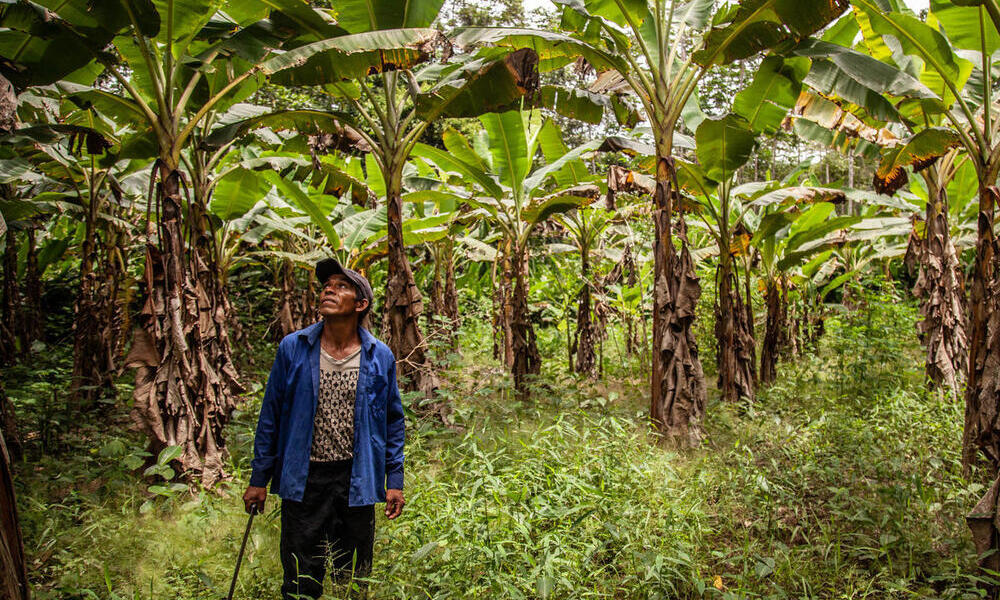- Date: 08 August 2022
- Author: Tara Doyle, World Wildlife Fund
The concept of sustainability is steadily gaining traction in the public sphere, but discussions around this topic often fail to provide a clear definition of the term’s meaning. An activity is considered sustainable if it can be continued in the same way long into the future; in other words, if it’s able to be sustained. This topic is commonly associated with the environment, but there are actually three distinct principles of sustainability that address the environmental, economic, and social realms. The first principle has to do with the limits of our biosphere: we must not consume resources faster than they are naturally replenished. This principle can be deceptively simple. For instance, imagine a paper company that plants an equal number of trees as it harvests each year. Is their business model really sustainable if the trees take more than one year to grow? In this case, the company might selectively harvest trees within a managed forest, versus clearing an entire area.

A local partner of Forest Entrepreneurs Indigenous Peoples Project, a WWF-Peru program that aims to support indigenous communities in the development of sustainable ventures.
- Date: 04 August 2022
- Author: Jesse Marcus, World Wildlife Fund
Global food production is a major driver of biodiversity loss around the world, primarily due to land conversion and degradation of critical ecosystems like tropical forests, grasslands, and wetlands.
Food production consumes over 70% of freshwater globally and is a major source of pollution. Global food systems are also impacting climate change, contributing over one-quarter of anthropogenic global greenhouse gas emissions annually—especially methane and nitrous oxide. Those food systems are in turn impacted by climate change, as they are vulnerable to the impacts of higher temperatures as well as more extreme and unpredictable weather events.
And that’s not all: dwindling natural resources, new infectious diseases, unstable markets, widening social and economic inequities—all these environmental and development challenges are at least in part a consequence of our broken food system.
I wanted to better understand how these challenges—and the solutions to them—all fit together, so I asked a diverse array of WWF experts to offer their unique perspectives on the food crisis.
- Date: 03 August 2022
- Author: Sheila Bonini, Senior Vice President, Private Sector Engagement
The recent news of a deal on a Congressional budget reconciliation package that includes unprecedented federal investment focused on climate change and clean energy is an opportunity that cannot be missed.
To understand the urgency around addressing the climate crisis, look no further than the frequent and extreme storms and unprecedent heatwaves that we are experiencing this summer due in part to human-caused global warming. These past few months have been a window into the more dire impacts of climate change we can expect unless we limit warming to 1.5° C (2.7° F) according to a recent report by the United Nations.
Leading businesses are doing their part to address climate change by setting ambitious climate goals and tackling their own emissions. In fact, more than five dozen of the U.S. Fortune 500 companies have set climate goals approved by the Science Based Targets initiative (SBTi). These are great first steps towards the global goal of halving emissions by 2030, but we need leadership from Washington to incentivize clean energy investment and supply chain decarbonization to achieve climate mitigation at scale.
- Date: 28 July 2022
In our Behind the Scenes series, we speak to WWF staff to learn more about their work and what makes them tick. For today's post, we caught up with Daniel Buchner, an associate in WWF's General Counsel's office.
- Date: 21 July 2022
In our Behind the Scenes series, we speak to WWF staff to learn more about their work and what makes them tick. For today's post, we had a great chat with Shawn Walker, an Executive Assistant on WWF's Private Sector Engagement Team.
- Date: 13 July 2022
- Author: Caroline Tippett, Vice President of Ocean Markets and Finance
This is part one of a series that explores what sustainable coastal and marine tourism will look like in 2030 and 2050, and identifies the three key shifts needed by 2025 to achieve this ambitious vision.
As pandemic restrictions are being lifted gradually in most coastal regions, millions of tourists will be swarming to their favorite beach destinations this summer. Tourism remains an effective and familiar way for people to connect with nature. Although a healthy ocean is unequivocally a cornerstone of high-quality traveler experiences, the most significant market-based contributor to finance protected areas and a tool to benefit local communities and businesses, the dominant mass tourism approach does not take nature into account—with devastating consequences for marine habitat and its fauna.
With more than 1.4 billion international travelers travelling the world before the pandemic, according to the UN World Tourism Organization (UNWTO)[1], the potential for tourism as a powerful and transformative force for sustainable development is significant. In 2019, the tourism sector was the third largest for exports, one of the fastest growing, the largest service employer and one of the most critical drivers of economic growth through job and enterprise creation, export revenues and infrastructure development. This trend is forecast to resume when the pandemic recedes.
There is no healthy ocean without sustainable coastal and marine tourism at a scale to meet consumer demand. Well-managed tourism can support conservation while contributing to sustainable development and providing income opportunities and a higher quality of life for coastal communities. We have an opportunity by 2030 to get things right. After all, it’s in the tourism industry’s self-interest; nature is its most important business partner. Hotels, cruise ships, tour operators and the industry’s long and wide supply chain depend on beautiful destinations for their long-term business health. The vision of the World Wildlife Fund (WWF) for the next decade is to contribute with our partners in conservation towards nature-positive tourism where all supply chain actors converge to create value for people, nature and businesses. This approach has been framed by the UN Sustainable Development Goals and the industry and standards and principles set by the Global Sustainable Tourism Council (GSTC).
Since its inception, WWF has partnered with the travel industry. Businesses across the travel industry are increasingly aware of the competing needs in any given seascape, how habitat loss and climate change are intricately related, and the transformational role the travel industry can play in restoring and elevating ocean resilience.
It starts with a shift from a ‘first do no harm’ mentality to making a net contribution to people and the planet. This requires a holistic approach that leverages existing movements to protect places, provides access to financing to support sustainable tourism enterprises and ensures policies are co-created with and ultimately benefit Indigenous Peoples and local communities.
Shifting industry to nature-positive tourism
The first shift that needs to occur will be structural, factoring sustainable tourism into the High Ambition Coalition for Nature and People 30×30 ambitions[2]. Area-based conservation interventions need to be integrated, holistic and based on good outcomes for local people, global society and nature. The sovereignty of local communities and Indigenous Peoples over their natural seascapes needs to be codified through co-created conservation plans in areas where tourism, nature and people coexist. Thus, businesses need to work in synergy and team up with communities directly impacted by coastal developments and tourism activities. This will have to include embedding sustainability and resilience principles across the lifecycle of infrastructure projects. This vision also relies heavily on improved tourism management systems, including raising the capacities, education and inclusiveness of travelers, the private sector and local communities.
The second shift is perceptual, moving from outdated mass tourism to sustainable, restorative tourism. Mentalities across the tourism supply chain should also shift to view protecting wildlife as the best partner for ocean tourism. In the first major study of world wildlife tourism, researchers at the University of Oxford’s Wildlife Conservation Research Unit concluded that up to 40 percent of tourism worldwide is wildlife tourism across seascapes and landscapes[3]. Wildlife viewing, including iconic species like whales, sharks, turtles, dolphins and other megafauna, drives billions of dollars for the tourism industry. In this sense, a sustainable blue economy globally and in many areas remains one of the most significant livelihood generators and a robust engine for local economies. Sustainable tourism should improve governance in protected areas and strengthen cooperation between management bodies and local stakeholders for more significant mutual economic and environmental benefits.
The third shift needs to come from finance. Tourism can be big business and is enabled by capital flows from financial markets. In 2019 alone, before the pandemic, tourism accounted for $948 billion in capital investment, or 4.3 percent of total investment worldwide that year[4]. These financial flows need to be aligned to a sustainable blue economy to minimize short-, medium- and long-term risks, such as those stemming from climate change and a degraded environment.
Financiers, including banks and investors, urgently need to adopt and implement the Sustainable Blue Economy Finance Principles and their associated guidance[5]. This guidance has been developed to support key sectors, including the transition to sustainable marine and coastal tourism, to support the work with clients and portfolio companies to shift practices towards nature-positive outcomes. In addition, local tourism businesses and communities protecting natural capital and social cohesion must have equitable and sustainable sources of capital to grow and incentives for long-term natural resource management.
One example of this in Latin America, where the InterAmerican Development Bank launched a challenge in collaboration with the UNWTO to finance sustainable tourism development that introduced innovation for environmental sustainability and employment. Businesses that won financing through the challenge include the Green Fins Global Hub, which aims at supporting small marine tourism enterprises in Costa Rica and the Dominican Republic to achieve higher environmental standards. Another business, Experience Nariva in Trinidad and Tobago, aims to stimulate ecotourism in the Narira Swamp, a Ramsar-protected site, to benefit local communities and create incentives for good environmental stewardship.
These three shifts cannot be fulfilled if policies do not keep up with the pressing needs and anticipate future upheavals in nature conservation and the tourism industry. Appropriate policies can enable new and desirable directions, spur innovation and help address challenges and problems.
To read part two of this series click here.
[1] UNWTO. “International Tourist Arrivals Reach 1.4 Billion Two Years Ahead Of Forecasts”, January 2019. https://www.unwto.org/global/press-release/2019-01-21/international-tourist-arrivals-reach-14-billion-two-years-ahead-forecasts
[2] High Ambition Coalition. https://www.hacfornatureandpeople.org/home
[3] PLOS ONE. “The Customer Isn’t Always Right—Conservation and Animal Welfare Implications of the Increasing Demand for Wildlife Tourism” https://journals.plos.org/plosone/article?id=10.1371/journal.pone.0138939
[4] IISD. “Tourism Recovery and Resilience in Commonwealth Small States: Driving circular economy pathways post-COVID-19”. https://www.iisd.org/articles/tourism-recovery-resilience-commonwealth-small-states-circular-economy
[5] UN Environment Programme Finance Initiative, Turning the Tide: How to Finance a Sustainable Ocean Recovery, March 2021, https://www.unepfi.org/publications/turning-the-tide/.
- Date: 12 July 2022
- Author: Caroline Tippett, Vice President of Ocean Markets and Finance
This is part two of a series that explores what sustainable coastal and marine tourism will look like in 2030 and 2050, and identifies the three key shifts needed by 2025 to achieve this ambitious vision. Part one is available here.
Leading the way hand in hand with businesses
As the leading conservation organization aiming at creating a better future for people and nature, we recognize that we cannot do this alone. WWF engages in our conservation work with communities, governments and companies to create lasting change. That is why WWF has been partnering with some of the world’s leading corporations in the hospitality and tourism sector for over a decade to meet conservation threats, with remarkable response.
One notable case study concerns our work with Royal Caribbean Group to certify its tour operators to the GSTC standard[7]. At WWF’s recommendation, Royal Caribbean Group committed to increasing the sustainability of its tour offerings through the GSTC framework. The company set a target to provide 1,000 tours through operators certified by a GSTC-accredited certification body by 2020, representing about 25–30 percent of its tour portfolio. By December 2020, it had achieved over 2,000 GSTC-certified tours through 33 different tour operators in 29 different countries.
Contributing to this achievement was the thoughtful education of key Royal Caribbean staff and local tour operators on the GSTC standard and certification process and establishing a sustainable procurement policy preferring GSTC-certified tour operators. Royal Caribbean was the first major travel company to adopt preferential purchasing based on GSTC-accredited certification. This has allowed tour operators to proudly help protect the environment while also saving costs. When a shore excursion tour operator is certified, it creates an important multiplier effect, as these operators often provide tours to other cruise lines and travel companies.
WWF additionally piloted three GSTC destination assessments in Honduras and Belize with the German Agency for International Development (GIZ) and Royal Caribbean with the local governments and civil society. Similar sustainable tourism initiatives were carried out in the Philippines together with the company and Donsol. WWF is looking to expand its collaboration with Royal Caribbean in the coming years and build together a broader nature-positive initiative in Belize and other regions. This model has the potential to be replicable with other corporate partners as part of WWF’s nature-positive business strategy.
With leading hotelier Hilton, we also have led transformative freshwater resource initiatives in some of their properties in South Africa during the devastating drought. WWF is exploring collaboration with Hilton to design destination stewardship initiatives to improve seafood sourcing, influence customer behavior and further area-based restoration efforts.
Takeaway
Nature-positive tourism is not only possible but necessary if we want to meet ocean conservation ambitions by 2030. There is reason to be hopeful, with the growing engagement from governments and the financial and hospitality sectors, but an awful lot of work is still needed to bend the curve of decline in nature and climate change. To maintain the natural capital on which the tourism business model is based, businesses need to act now, before the scenic beaches and marine ecosystems tourists seek are wiped away by unsustainable developments and climate change. There is also strong momentum in the finance community to redirect capital flows towards nature-positive businesses; this should be harnessed to accelerate the transition for the benefit of people, planet and peace.
##
[6] IPCC reports. https://www.ipcc.ch/reports/.
[7] GSTC. Royal Caribbean’s 2020 Sustainability Report. https://www.gstcouncil.org/royal-caribbeans-2020-sustainability-report/.
- Date: 11 July 2022
In our Behind the Scenes series, we speak to WWF staff to learn more about their work and what makes them tick. For today's post, we sat down with Annika Terrana, a director on WWF's Forest team.
- Date: 23 June 2022
In our Behind the Scenes series we speak to WWF staff to learn more about their work and what makes them tick. For today's post, we caught up with Alex Nichols-Vinueza, Program Manager, Food Loss & Waste on WWF's Food team.
- Date: 16 June 2022
In our Behind the Scenes series we speak to WWF staff to learn more about their work and what makes them tick. For today's post, we sat down with Kori Goldberg, a Plastic Waste Specialist on WWF's Private Sector Engagement.








